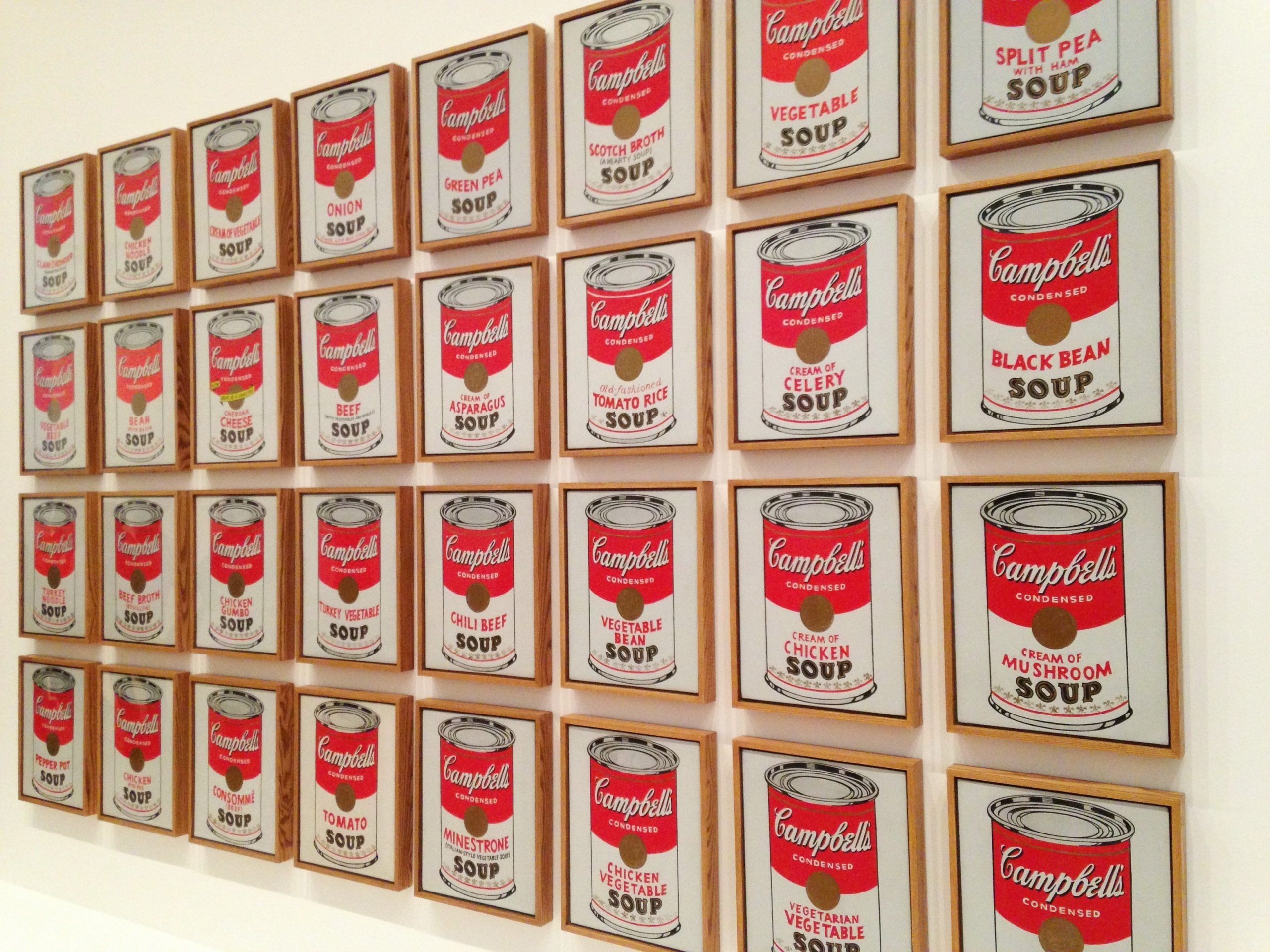More than thirty years after his death, it is a testament to Warhol’s creative genius that he remains one of the most influential and exalted figures in contemporary art, a longevity of career almost ironic in its defiance of his self-imposed rule: “Everybody will be world-famous for fifteen minutes”.
Andy Warhol was at the inception of a brave new world of consumerism in the ‘60s. The artist redefined an era and his elevation to iconic status was the work of revisionist historians. His career presented us with possibly the largest exchange of societal values in 20th century artistic history. As an artist who rose to eminence at a point where the abstract expressionism of the ‘40s and ‘50s had almost reached its creative bankruptcy, it was a decidedly radical decision of his to use seemingly innocuous consumer products such as Coca-Cola, Brillo and Campbell’s Soup, to name but a few, as not merely the source but the very essence of his oeuvre. As one of the leading proponents of the new pop art movement, Warhol demarcated himself from his contemporaries, Lichtenstein and Rosenquist, by shifting the commercial light from fictitious depictions meant for comic entertainment, onto the stuff of everyday recognition and universal consumer use—an emphatic nod to the societal value imputed upon the post-war consumer culture. On the cusp of a decade synonymous with counterculture, consumerism, sexual liberation, and freedom, Warhol succeeded in capturing the zeitgeist of the time, injecting a realist perspective of what the American Dream entailed.
The idea that Warhol partook in an ‘exchange’ rather than a mere one-sided exhibition of societal values lies in the philosophy of anti-mimesis: a notion most succinctly described by Oscar Wilde in his 1889 essay ‘The Decay of Lying’: “Life imitates Art far more than Art imitates Life”. This symbiotic ‘imitation’ is evident in Warhol’s seminal work ‘Campbell’s Soup Cans’ (1962): a work consisting of 32 canvases, with each painting corresponding to a different flavour, imitating the real-life Campbell’s advertisement billboards through the grid-like, repetitive, methodical aesthetic he used. His mimicking of the archetypally capitalist techniques used for advertisement puts himself in the de facto position of society’s mass producer. His silk-screening process was increasingly relied upon in his work that followed, providing us with an even more striking parallel with mass production, with this process constituting the printing of facsimiles of each illustration, making the need to individually repaint each image a redundant process. The automatism of Warhol’s printing processes quite presciently coincided with the increase in the efficacy of mass production, displaying a real-life emulation of Warhol’s work.
In a similar fashion, Warhol’s vision of a society of mass consumption became a self-fulfilling prophecy in its own right. Not only did Warhol’s ‘Campbell’s Soup Cans’ transpose itself onto the world of fashion with the advent of the new ‘Souper dress’ donned primarily by affluent New York socialites, but in rather ominous fashion, Campbell’s Soup capitalised on his success by reducing this self-same design to a crude imitation of a dress, now made from paper, being sold as part of a special offer to anyone who sent one dollar and two Campbell’s soup can labels they accrued to the company. This aggressively capitalist exploitation of Warhol’s work depicted the commercial devaluation of art in exchange for a consumer society: Warhol had given his art to society and this is what society gave to him in return.
Interestingly, Warhol found a way of usurping the idea of a capitalist stronghold on a society of consumerism, by explaining thus: “What’s great about this country is that America started the tradition where the richest consumers buy essentially the same things as the poorest”, for “you know that the President drinks Coke, Liz Taylor drinks Coke, and just think, you can drink Coke, too. A Coke is a Coke and no amount of money can get you a better Coke than the one the bum on the corner is drinking.” By introducing parity in the most curious set of circumstances, Warhol extolled the unexpected virtue of equality in mass production and the uniformity of consumer products.
Warhol’s foray into film also demonstrated the transient value that society placed on celebrities: the most notorious ‘superstar’ that emerged from his Factory was ‘it’ girl Edie Sedgwick, who epitomised the sad disposability and rapid diminution in value of society’s celebrities. As a socialite once bestowed with the title ‘Girl of the Year’ and believed to be for a certain time Warhol’s muse, her untimely death by drug overdose at 28 was met with Andy’s response: “Edie who?” His indifference towards his very own purpose-built superstar serves as an example of the impermanence of value that society places upon celebrities.
Warhol’s exchange of societal values, half a century hence, has shown no signs of stopping, even posthumously: Moschino’s Autumn 2014 fashion show inspired by fast food demonstrates that the existence of consumerism in art is alive as much now as it ever has been.



